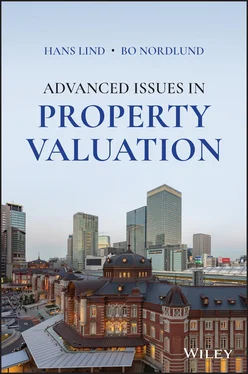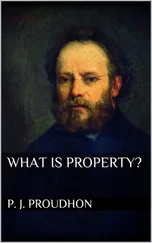1 Cover
2 Title Page
3 Copyright Page
4 Preface
5 1 Introduction1.1 The General Purpose of the Book 1.2 Overview of Issues Covered 1.3 How the Book Can be Used
6 2 The Concept of Market Value2.1 Introduction 2.2 Standard Definition 2.3 Criteria for a Good Definition: Clear, Measurable, Concise and Relevant 2.4 Problem 1: ‘Estimated Price’ or ‘Most Probable Price’? 2.5 Problem 2: Shall the Definition Refer to a Competitive Market? 2.6 Problem 3: Should the Definition Refer to Prudent and Knowledgeable Actors? 2.7 Problem 4: Should the Definition Include a Reference to Willing Seller and Willing Buyer? 2.8 Problem 5: Market Value and Turnover 2.9 Highest and Best Use 2.10 Conclusion Exercises
7 3 Finding the Market Value: What Is a Valuation Method and How Should the Methods Be Categorized?3.1 Introduction and Overview 3.2 The Three Classic Valuation Approaches/Methods 3.3 A Problem with the Standard Classifications 3.4 The Information Base of a Valuation 3.5 A Different Way to Classify Valuation Methods 3.6 Adjustment Methods 3.7 Why Is Regression Analysis (Hedonic Methods) Seldom Used in Ordinary Valuations? 3.8 What Is Really the Cash‐Flow Method? 3.9 Valuation of Development Properties and Option Aspects 3.10 Use of Different Methods in the Valuation of a Specific Object: Concluding Comments Exercises
8 4 Uncertainty and Bias in Property Valuations 4.1 Introduction 4.2 Valuation Variance: Why Do Valuers Disagree? 4.3 Valuation Accuracy: Why Do the Observed Price Differ from the Market Value? 4.4 How Confident Is the Valuer in the Estimated Market Value? 4.5 How Stable Is the Estimated Market Value? 4.6 Client Influence and Bias 4.7 Behavioural Factors 4.8 Valuation Smoothing 4.9 How Self‐Selection Can Lead to ‘Bias’ 4.10 Possible Policy Recommendations 4.11 Concluding Comments Exercises
9 5 Valuation for Lending Purposes and Long‐Term Value Concepts5.1 Introduction 5.2 Two Competing Theories About Predictability of Property Prices 5.3 Price Bubbles on the Real Estate Market 5.4 The Leverage Cycles and Bank Incentives 5.5 Use Market Value, Make Risk Analysis and Adjust the Loan‐to‐Value Ratio (LTV‐Ratio) 5.6 ‘Long‐Run Value’ as an Alternative 5.7 Alternative Value Concept (1) Mortgage Lending Value 5.8 Alternative Value Concept (2) Worth or (Normalized) Investment Value 5.9 Derivatives of Market Value 5.10 Cost‐Based Value Concepts 5.11 Final Comment: Can Valuation Methods and Credit Rules Affect the Property Cycle? Exercises
10 6 Valuation for Financial Reports and Other Accounting‐Related Issues6.1 Introduction 6.2 The Fair Value Concept 6.3 The Fair Value Hierarchy, Disclosure Requirements and the Risk for Bias 6.4 Valuation of Public Sector Properties 6.5 Property Depreciation, Refurbishments and Free Cash Flows to the Property Firm 6.6 Auditing and Quality Assurance of Fair Values in Financial Reporting 6.7 Concluding Comments About Fair Values Exercises
11 7 Property Valuation and Sustainable Buildings 7.1 Introduction 7.2 What Is a Green/Sustainable Building – on Environmental Certification Systems 7.3 How Sustainability Can Affect Property Values 7.4 Valuation Methods and Sustainable Buildings 7.5 The Relation Between Values of ‘Green’ and ‘Brown’ Buildings 7.6 Concluding Comments Exercises
12 8 Transparency Issues 8.1 Transparent and Rational Markets 8.2 Transparent Valuation Reports 8.3 Concluding Comments Exercises
13 9 Valuation Ethics, the Role of the Valuer and Governance9.1 The Importance of Valuation and Basic Ethical Rules 9.2 The Responsibility of Valuers and Valuation Firms 9.3 Authorization/Certification of Valuers 9.4 Concluding Comments Exercises
14 10 Property Valuation in the Future 10.1 Technological Development 10.2 Structural Changes in Society: Corona‐Pandemic as an Example 10.3 Radical Uncertainty and Property Valuation Exercises
15 Appendix A: Can the Value of a Property Be Divided into Value of the Parts?A.1 Introduction A.2 Dividing the Value into Land Value and Building Value for Homes and Commercial Buildings A.3 Dividing the Value into Farmland and Farm Buildings A.4 Dividing the Value into Property Value and ‘Business Enterprise Value’ A.5 Concluding Comment Exercises
16 References
17 Index
18 End User License Agreement
1 Chapter 3 Table 3.1 Potentially useful information (1): relatively more objective. Table 3.2 Potentially useful information (2): relatively more subjective. Table 3.3 IFRS Fair value hierarchy: quality of inputs.
2 Chapter 4Table 4.1 Example of effects on price of the distribution of reservation pric...Table 4.2 Different degrees of confidence in the estimated market value.
3 Chapter 5Table 5.1 Illustration of using a moving average: four‐year average.Table 5.2 Illustration of using a moving average: six‐year average.
4 Chapter 6Table 6.1 Assumed reservation prices.
5 Chapter 7Table 7.1 The effect of sustainability on value: an hypothetical example.
6 Chapter 8Table 8.1 Most transparent countries 2018.
7 Chapter 9Table 9.1 Different types of authorization systems.
1 Chapter 2 Figure 2.1 Price and quantity with an almost horizontal demand curve. Figure 2.2 Price and quantity with a partly horizontal supply curve.
1 Cover Page
2 Title Page
3 Copyright Page
4 Preface
5 Table of Contents
6 Begin Reading
7 Appendix A Can the Value of a Property Be Divided into Value of the Parts?
8 References
9 Index
10 Wiley End User License Agreement
1 iii
2 iv
3 ix
4 1
5 2
6 3
7 4
8 5
9 6
10 7
11 8
12 9
13 10
14 11
15 12
16 13
17 14
18 15
19 16
20 17
21 18
22 19
23 20
24 21
25 22
26 23
27 24
28 25
29 26
30 27
31 28
32 29
33 30
34 31
35 32
36 33
37 34
38 35
39 36
40 37
41 38
42 39
43 40
44 41
45 42
46 43
47 45
48 46
49 47
50 48
51 49
52 50
53 51
54 52
55 53
56 54
57 55
58 56
59 57
60 58
61 59
62 60
63 61
64 62
65 63
66 65
67 66
68 67
69 68
70 69
71 70
72 71
73 72
74 73
75 74
76 75
77 76
78 77
79 78
80 79
81 80
82 81
83 82
84 83
85 84
86 85
87 86
88 87
89 88
90 89
91 90
92 91
93 92
94 93
95 94
96 95
97 97
98 98
99 99
100 100
101 101
102 102
103 103
104 104
105 105
106 107
107 108
108 109
109 110
110 111
111 112
112 113
113 114
114 115
115 117
116 118
117 119
118 120
119 121
120 122
121 123
122 124
123 125
124 126
125 127
126 128
127 129
128 130
129 131
130 133
131 134
132 135
133 136
134 137
135 138
136 139
137 140
138 141
139 142
140 143
141 144
142 145
143 146
144 147
145 148
146 149
147 150
148 151
Advanced Issues in Property Valuation
Hans Lind and Bo Nordlund

This edition first published 2021
Читать дальше













